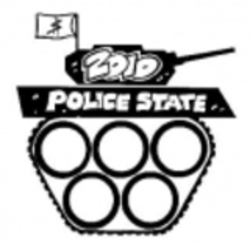Olympics, G8 stretch military staff thin
By David Pugliese
With more than 4,000 Canadian Forces personnel assigned to Olympic security and preparations under way for a G8 summit in Ontario, the military doesn’t expect its staff to get much of a rest until later in the summer, according to Defence Department documents.
Although much of the recent focus has been on the Afghanistan mission and Olympic security, the G8 summit, scheduled for late June in Huntsville, Ont., is also draining military resources.
“G8 has potential to cause problems,” noted a military briefing about the impact of the Olympics security detail and the Afghan mission in 2010.

It is unclear at this point how many military personnel would be used for the G8 event. Those numbers are still being worked on by planners, according to military officers. But the role will be similar to the one being handled by the military during the Olympics, which involves operational planning and land and air surveillance, among other duties.
A briefing report prepared last spring for top soldier Gen. Walter Natynczyk pointed out that defence planners didn’t expect the military personnel situation to return to more normal deployment levels until this summer, after the G8 summit.
With the workup to the Olympics and the relief mission in Haiti, the Canadian Forces has seen an almost unprecedented level of activity.
The navy is running at full tilt, with 2,599 personnel, or 38 per cent of its trained effective strength, deployed on operations or at sea. That includes support to the Olympics, a counter-piracy mission overseas and the Haiti relief operation.
The Disaster Assistance Response Team was sent to Haiti along with other support troops and elements of the air force. The Afghan mission still continues, an operation that affects 22,500 civilian and military personnel, according to the Defence Department.
That includes those actually serving on the mission for a six-month period, plus those training for future Afghan missions and those allowed time to rest before a new deployment. The military also includes another 10,000 civilian workers and military personnel in that figure as they are required back in Canada to support the Afghan mission.
Canadian Forces spokesman Lt.-Col. Norbert Cyr said the staffing levels were planned for.
“We’re not hurting right now, not at all,” Cyr said. “We’re not seeing any signs of fatigue on the troops. Yes it’s challenging but right now it’s not an issue.”
Defence analyst Martin Shadwick said this year is shaping up to be one of the busiest for the Canadian Forces in the post-Second World War period.
“It’s something they can’t sustain,” said Shadwick, a York University strategic studies professor.
Military officials have been planning for the last couple of years on how to deal with the 2010 missions. In a May 2008 plan, then-general Rick Hillier outlined how the military would handle deployments for 2010, noting that the Olympics, the G8 meeting and the Afghan mission all represented a “significant challenge.”
The plan, Hillier pointed out, would be based on the assumption that “unforeseen humanitarian aid operations will not involve the Disaster Assistance Response Team for the period of January to March 2010.”
The Haiti earthquake in January, however, upset that assumption as DART was sent to the island nation.
Source: http://www.vancouversun.com/news/Olympics+stretch+military+staff+thin/2594531/story.html



